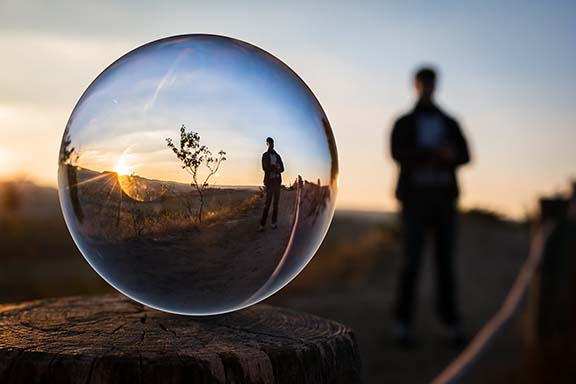Photography

Photography
Mobile Business Intelligence (mobile BI or Mobile Intelligence) refers to the distribution of business data to mobile devices such as smartphones (from English: smartphones) and tablets (from English: tablet or tablet computer). Business Intelligence (or BI of business intelligence) refers to computer techniques used in the detection and analysis of business data, such as revenue from sales of products and / or services or associated costs and revenues.
Although the concept of mobile computing has prevailed for more than a decade, mobile BI has shown growth only very recently. This change has been partly encouraged by a change from the “connected world” to a wireless world with the advantage of smartphones that has given rise to a new era of mobile computing, especially in the field of Business Intelligence.
Mobile Business Intelligence
According to Aberdeen Group, a large number of companies are rapidly undertaking mobile BI due to increased market pressures, such as the need for greater efficiency in business processes, improved employee productivity (e.g., time dedicated to search for information), faster and faster decision making, better customer service and real-time delivery of bidirectional data access to make decisions anytime, anywhere.
Photographic Technique
The invention of the photographic technique is the result of the combination of various technical discoveries. Among the precursors are the Chinese philosopher Mo Di, the Greeks Aristotle and Euclid, who described a dark chamber in the 5th and 4th centuries BC. C; 3 4 the Byzantine mathematician Antemio de Tralles, who in the 6th century used a dark chamber form in his experiments; 5 and four centuries later, the Arab mathematician Alhacén made a clear and deep study about the dark chamber and pinhole projection.4 6 In the field of chemistry, San Alberto Magno discovered the properties of silver nitrate, 7 and Georges Fabricius (1516-1571) those of silver chloride. In 1568, Daniele Barbaro described the mechanism of a diaphragm, 8 and in 1694.

Photochemical Effect
Wilhelm Homberg described the photochemical effect produced by the darkening of some materials in the presence of light.9 The artists already used the dark chamber as a resource for reproduce images and in the L’Encyclopédie of 1751 different types are described that could be used.10
A first experimental photographic procedure was the heliogravure, discovered by Joseph Nicéphore Niépce in the 1820s. In 1826 he got his first permanent (direct positive) image: a view from his window in Le Gras, using a dark camera and as a sensitive material to Light a mixture of bitumen from Judea. The exposure time needed to obtain these images was very long: several hours on a sunny day. In his search for a more effective method, he associated with Louis Daguerre and experimented with silver compounds, based on a previous study by Johann Heinrich Schulze from 1816, where he showed that a

Photography
Mixture of silver and chalk darkened with exposure to light . After the death of Niépce in 1833, Daguerre continued to work alone, developing in 1837 the procedure known as a daguerreotype and spreading it to the world in 1839. Previous studies of Niépce were widely surpassed, and that is why most historians consider that 1839 is the zero year of the photograph itself.
Photography is born at a time of transit from pre-industrial society to industrial society, favored by the technical innovations of the time. The positivist philosophy also influences its birth, which states that every element of Nature must be empirically tested. The bourgeoisie is the dominant social class of the moment, which uses the portrait as an instrument of self-representation and affirmation of its social
Iimage
The daguerreotype consists in obtaining an image on a polished silver surface. To economize, it was normal for the plates to be silver plated, since it was only necessary to have a silver face.
The image was revealed with mercury vapors, appearing on the silver face of the plate, which had previously been sensitized with iodine vapors.12 But it was an expensive procedure and heavy equipment; a high exposure time of several minutes was required at the beginning. In addition, mercury vapors were really harmful to health.
Photographic Images
In 1840, William Henry Fox Talbot develops a negative-positive system, in another procedure called calotype. It consisted of obtaining a paper negative, which then by contact was positive on another sheet of paper. The paper was moistened in an acid solution of silver nitrate, before and after exposure, and before being fixed. It was the invention of the photographic copy, since a single negative could lead to several positives.
In 1842, the English astronomer and chemist John Herschel introduces the process called cyanotype. He was also the first to apply the terms “positive and negative” to photographic images. In 1819, Herschel discovered the solvent power of sodium hyposulphite around insoluble silver salts, setting a precedent for its use as a fixing agent in photography. He informed Talbot and Daguerre of his discovery in 1839, and that this could be used to permanently fix images. He made the first crystal negative in late 1839.

Iimages
To improve the sharpness of the images (avoiding the roughness of the paper) in 1850 Blanquart Evrard uses albumin paper. In these albumin copies, the paper fibers are coated with a layer of egg albumin. Then this paper was sensitized in silver nitrate.
In 1851, Gustave Le Gray presented the new photographic procedure of wet collodion. The collodion is poured liquid onto the glass plates, very clean. The plates are then sensitized in a tank with silver nitrate, and loaded into the chassis. It allows to obtain very sharp negative images. It is called “wet collodion” because the plate has to remain wet during the whole procedure of taking and developing the images. This meant that photographers had to carry
Author Profile

- Matheson
Latest entries
- December 30, 2023Photo PrintsDigital Art Laminated in Glass or Acrylic: Why Galleries and Artists Prefer the Shimmering Shield
- December 30, 2023Photo PrintsDPReview’s Year in Review
- October 5, 2023Photo PrintsAI Photo and Decoration: The Future of Displaying Memories
- October 5, 2023Photo PrintsHome Decoration: Elevating Interiors with Glass Photo Prints
